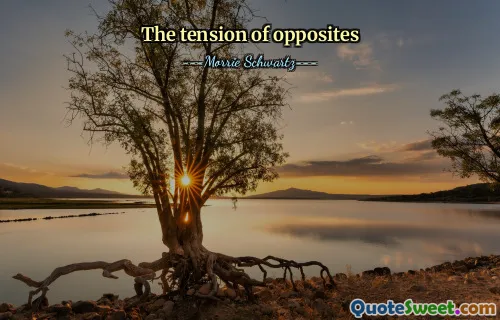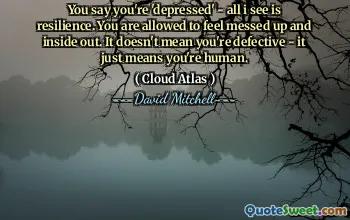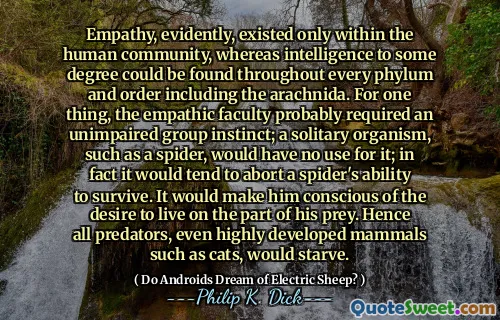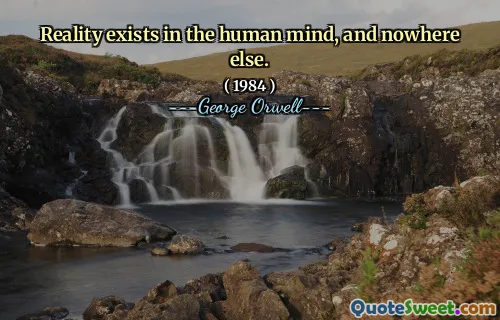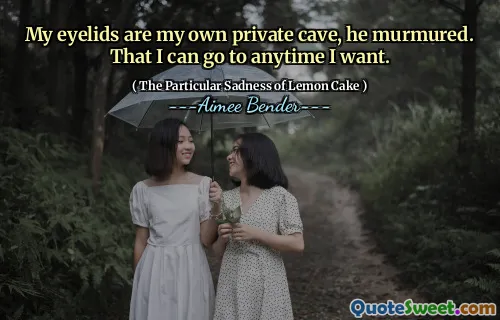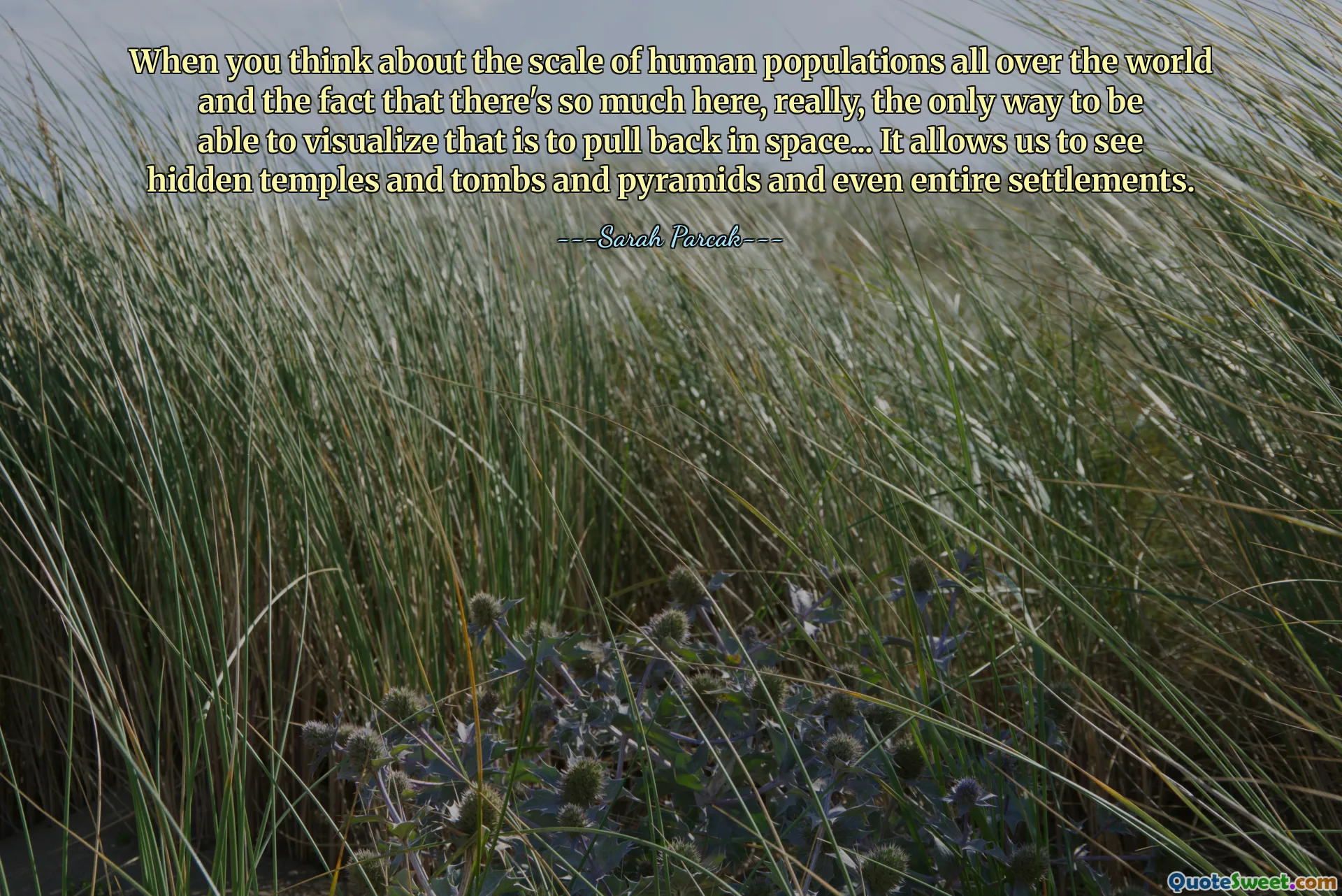
When you think about the scale of human populations all over the world and the fact that there's so much here, really, the only way to be able to visualize that is to pull back in space... It allows us to see hidden temples and tombs and pyramids and even entire settlements.
This quote highlights the incredible power of modern technology, particularly satellite imaging, in expanding our understanding of human history and our environment. By stepping back into a broader spatial perspective, we can uncover details that remain hidden from ground level. These unseen structures — ancient temples, tombs, pyramids, and entire settlements — tell stories of civilizations long past, offering invaluable insights into cultural development, migration patterns, and societal organization. It underscores the importance of adopting macro-level viewpoints to appreciate the complexity and vastness of human history that might otherwise be obscured by the limitations of ground-based observations. Satellite imagery acts as both a time machine and a stealthy explorer, allowing archaeologists and historians to identify potential excavation sites, assess landscape changes over decades, and formulate hypotheses with minimal initial disturbance to the sites. Such perspectives foster a democratization of discovery, making archaeology and history accessible not just through excavations but through technological innovation. Embracing this approach broadens our understanding of humanity’s collective past and highlights the interconnectedness of civilizations across time and space. Ultimately, the quote emphasizes that viewing the world from a vantage point beyond our immediate sightline is essential in revealing the hidden narratives embedded in the Earth's surface, enriching our knowledge of history and culture.



